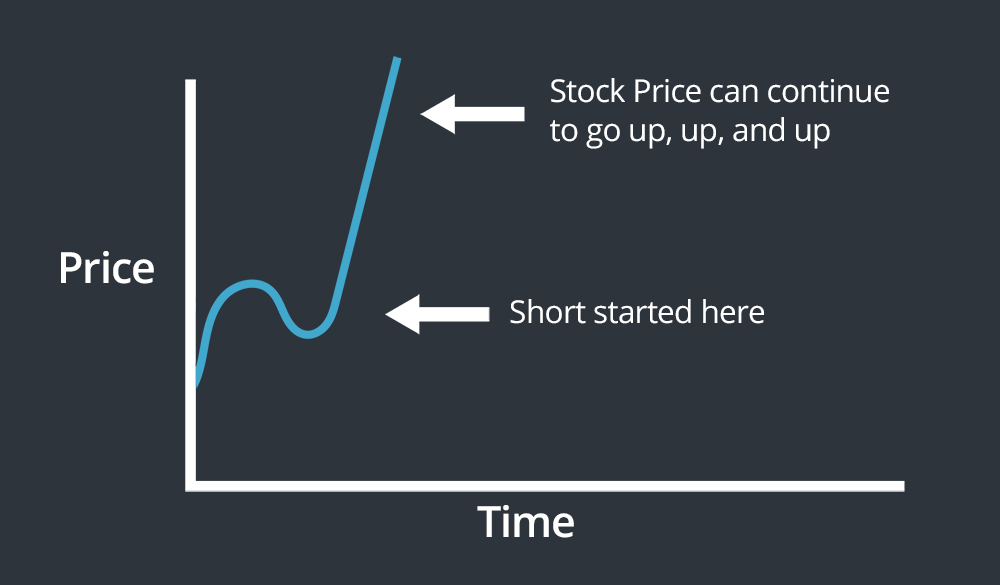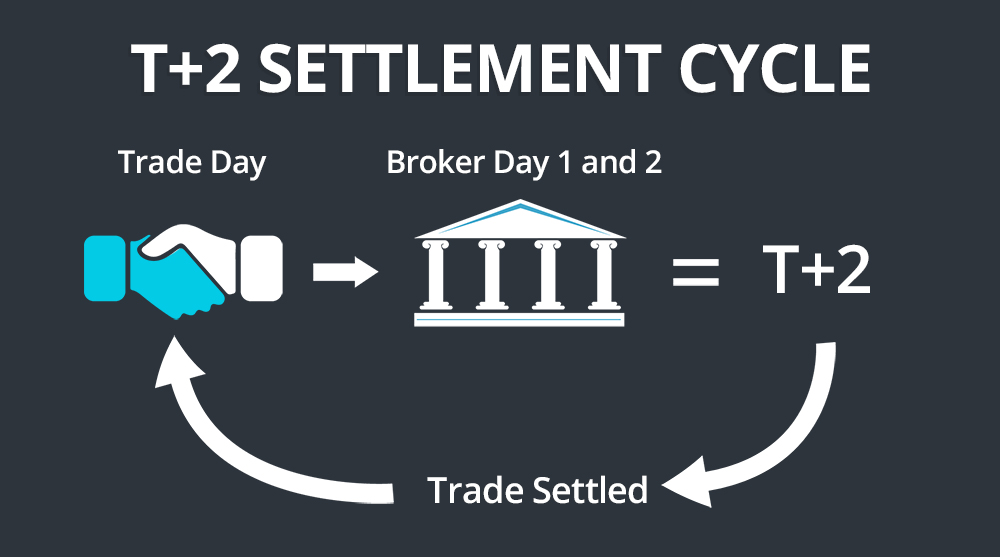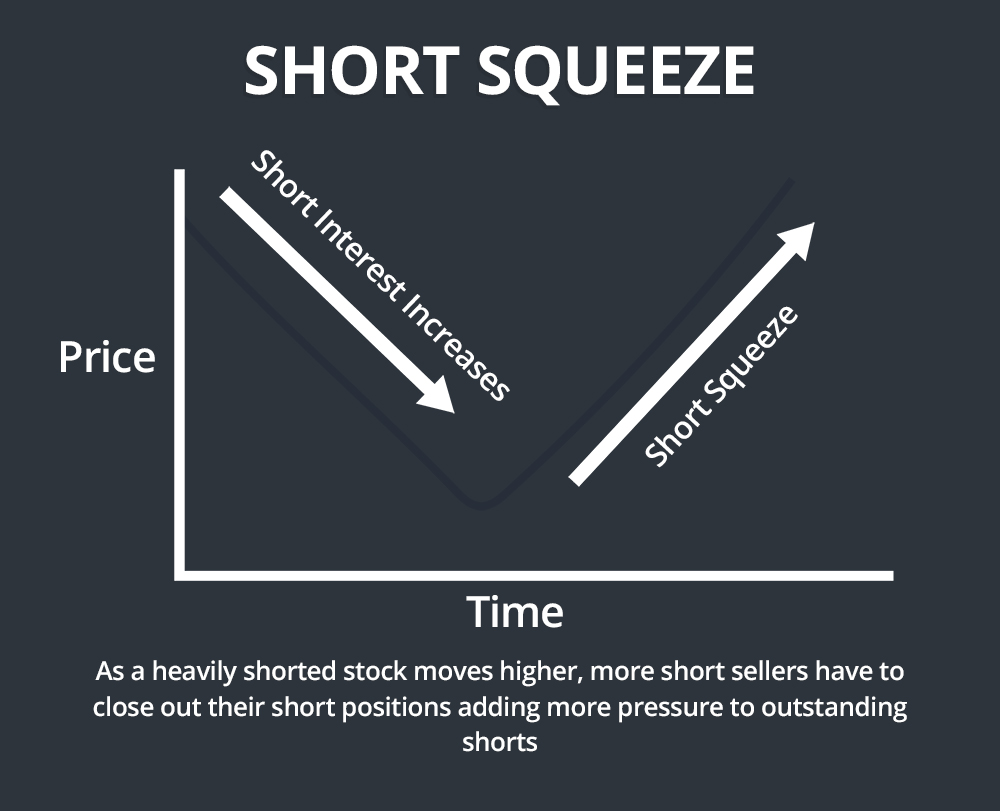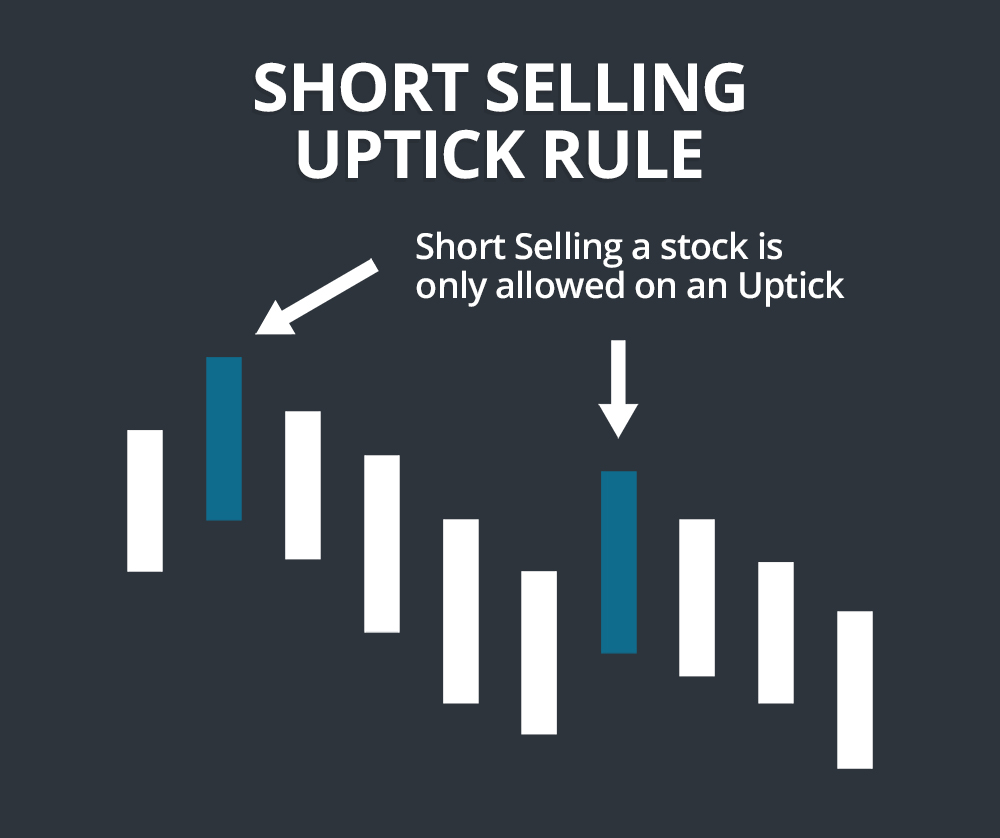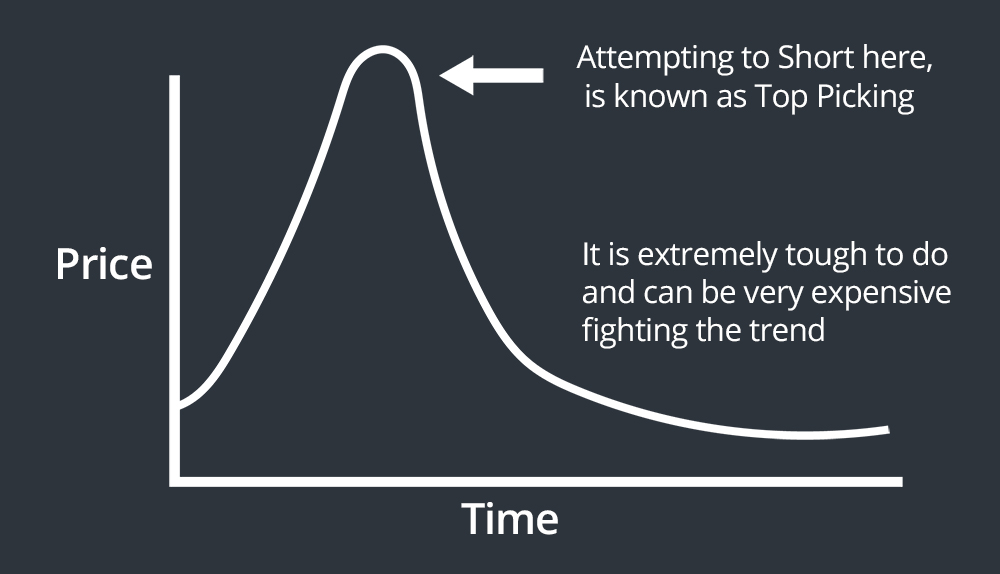You’ve seen ‘The Big Short’ right? So, now you want to be the next Michael Burry and bet against the deluded sheep, right? While the likelihood of that happening is highly unlikely, this article will build a solid foundation to gain a solid understanding. Going short is an easy concept to grasp. An easy way to remember a short sale: a reverse long. You sell shares first (expecting a drop in price) and buy them back at a later point. For example you may sell 500 shares of XYZ at $100 with a goal to buy it back at $95. That will net $5/share in the transaction if the plan comes together. Where did those 500 shares of XYZ come from? Brokers have shares of stock that they will lend to you in order to facilitate the short sale. So, first things first, let’s discuss the benefits of short selling.Why Short Selling?
Why would you want to short, though? Short selling is an essential tool to have as a trader because it enables you to play both sides of the market. While long-term price action generally favors the bulls, there are plenty of opportunities to take advantage of bearish price action. Furthermore, short selling can help you expand your list of tradable tickers. It allows you to make predictions on both upward and downward momentum (as opposed to just the former).For longer term traders, short selling can also allow you to hedge risk. Let’s think of an example. A trader is long 1000 shares of $GS (Goldman Sachs) and 1000 shares of $C (Citigroup). Tomorrow morning before the open, $JPM (JP Morgan) is reporting earnings. In the event that JPM doesn’t meet expectations, the trader is going to be exposed to a lot of risk being so overweight financials since the banks tend to move together. The trader can go short $XLF (SPDR Financial Sector) in order to hedge out this one time event. That way, the gains from the short will offset any losses on the longs.

So, how does a trader initiate a short position?
Locates and Borrows
In order to initiate a short position, you need to make sure there are shares available to borrow. Certain stocks are considered “easy-to-borrow,” meaning it’s easy to find shares to short. Other stocks are considered “hard-to-borrow” meaning it’s more difficult to find shares to short.

In certain situations, shares are not always available to short, and there is a real chance that you’re not the only trader out there that’s demanding shares. In other words, certain stocks (mainly small caps) may be considered ‘Hard to Borrow’ if your broker doesn’t have an inventory of these shares readily available. It doesn’t end there; securities that are hard to borrow generally have a pretty intimidating borrow cost attached to them. Since, after all, you are borrowing the shares from your broker, they are going to charge you interest on that. This is called a “hard-to-borrow” rate, which is an interest fee on your borrowed position.Hard-to-borrow rates can vary by stock, some which may be too high to make a swing position feasible. Furthermore, if your broker cannot find shares to borrow, they may offer a “locate” service. When your broker attempts to locate shares, they reach out to other brokers and clearing firms to see if anyone has inventory available for shorting. Often times, hard-to-borrow stocks need to be located pre-market and will come with an additional locate fee (on top of the hard-to borrow rate)
Short Selling Requirements & Risk
You can short sell stocks with most brokers. Some advanced short sellers may also prefer brokers with better short inventories and locate services, meaning they will have access to more borrowable securities. Regardless of the broker you choose, you will need a margin account to start shorting. The margin account allows you to borrow the shares you need to start short selling. Margin accounts can also be used to leverage your portfolio, giving you more buying power on both the long and short side. This is where shorting gets dangerous if you don’t have a proper plan in place.If you go long 100 shares of a stock tomorrow, you own those shares. Your risk is that the stock goes to 0 and you lose all of your money (100% of the investment). With short selling, you have theoretically infinite risk, plus fees. For example, if you short 5000 shares of a stock at $5, the stock could end up going to $10, $15, $20, and beyond.

T+2 Settlements and Forced Buy-Ins
It takes two business days for a stock transaction to “settle.” This is often referred to as “T+2.” While your broker debits your account for the trade the same day you place the trade, the trade isn’t officially on the books until T (the day of the transaction) plus two trading days. Since the trade is settled, it’s now fully capable of being bought in by the broker if the trade heads south on you and they want your shares back (which can happen due to regulatory purposes). If you’re on margin, you have to continue to fulfill margin requirements set forth by your broker. Failure to meet margin requirements could result in the broker liquidating a portion or all of your position to meet the margin requirements.Let’s say you initiated a short position on Monday at $5/share. On Thursday, the company gets bought out for $20/share. In this scenario, your loss would be $15/share. Your broker would force you out of the trade, and you would end up owing quite a sum due to margin. This is the danger of margin, and shorting in general. A stock price’s ceiling is infinite, but the floor is $0. There are other instances where you can be forced out of shorts, normally if the broker can no longer find locates or a broker is requesting that his shares be returned.

Short Squeezes
Sometimes, in heavily shorted stocks, a short squeeze can occur. A “short squeeze” occurs when many short sellers have to cover their positions, leading to an artificial inflation of the stock price. Short squeezes are fairly common in stocks that have a low float, or a small amount of shares available for trading. For example, if a stock goes from $10 to $15 over the course of two days, traders may notice the run and start short selling. The stock opens the next day at $16, and the shorts that started piling in from lower levels start buying to cover their position, sending the stock up even further purely based on artificial demand from short sellers.

Short Sale Rule
Another term to be mindful of is the SSR (Short Sale Rule), or uptick rule. A rule created to prevent shorting declining markets, the rule only permits short selling on upticks. A stock that falls 10% or more in a single day will have the SSR enabled for that current trading day and the following trading day. For example, ABC is down 15% trading at $205. The bid is $205 and the ask is $205.10. Selling short at the bid of $205 is not permitted. A trader needs to place an offer and get filled in order to get short the stock.

Finding Stocks to Short
Finding good stocks to short is a skill in itself. It’s important to find your niche when trading from the short side. Going short without a proper plan, or deviating from that plan, can cost you more than you can imagine. Stocks that have zero
fundamental value that overextend on daily charts are favorites amongst traders. Below are a few setups over the past few weeks that have caught the eye of many short sellers. It is extremely tough to short a stock that is just going parabolic, known as “top picking.” It’s good practice to wait for confirmation that a trend has reversed before jumping in blindly.

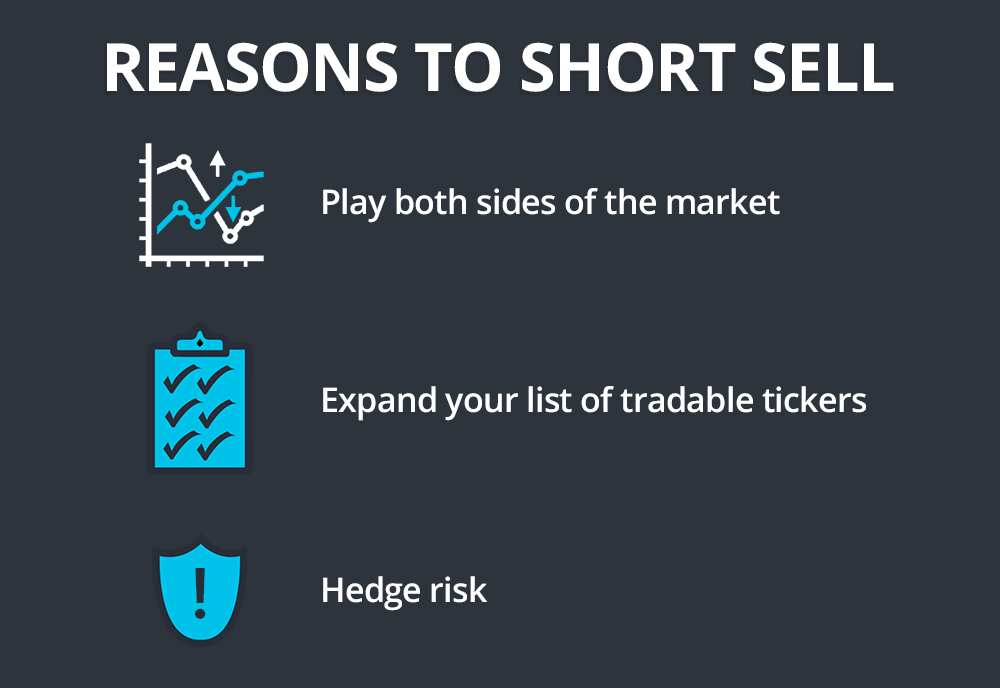 So, how does a trader initiate a short position?
So, how does a trader initiate a short position?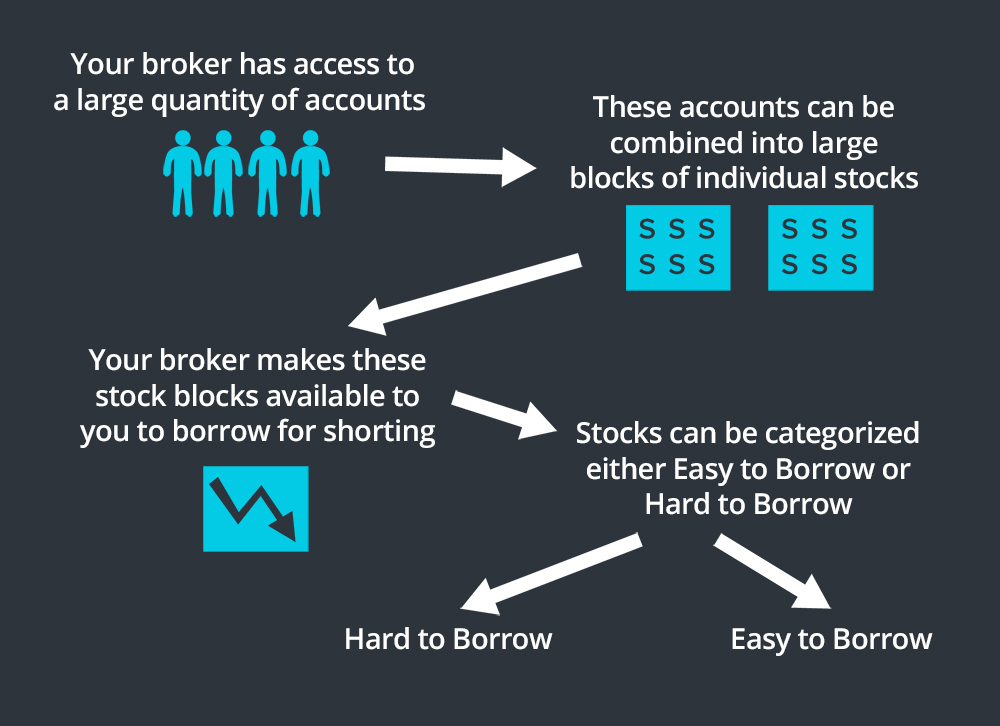 In certain situations, shares are not always available to short, and there is a real chance that you’re not the only trader out there that’s demanding shares. In other words, certain stocks (mainly small caps) may be considered ‘Hard to Borrow’ if your broker doesn’t have an inventory of these shares readily available. It doesn’t end there; securities that are hard to borrow generally have a pretty intimidating borrow cost attached to them. Since, after all, you are borrowing the shares from your broker, they are going to charge you interest on that. This is called a “hard-to-borrow” rate, which is an interest fee on your borrowed position.Hard-to-borrow rates can vary by stock, some which may be too high to make a swing position feasible. Furthermore, if your broker cannot find shares to borrow, they may offer a “locate” service. When your broker attempts to locate shares, they reach out to other brokers and clearing firms to see if anyone has inventory available for shorting. Often times, hard-to-borrow stocks need to be located pre-market and will come with an additional locate fee (on top of the hard-to borrow rate)
In certain situations, shares are not always available to short, and there is a real chance that you’re not the only trader out there that’s demanding shares. In other words, certain stocks (mainly small caps) may be considered ‘Hard to Borrow’ if your broker doesn’t have an inventory of these shares readily available. It doesn’t end there; securities that are hard to borrow generally have a pretty intimidating borrow cost attached to them. Since, after all, you are borrowing the shares from your broker, they are going to charge you interest on that. This is called a “hard-to-borrow” rate, which is an interest fee on your borrowed position.Hard-to-borrow rates can vary by stock, some which may be too high to make a swing position feasible. Furthermore, if your broker cannot find shares to borrow, they may offer a “locate” service. When your broker attempts to locate shares, they reach out to other brokers and clearing firms to see if anyone has inventory available for shorting. Often times, hard-to-borrow stocks need to be located pre-market and will come with an additional locate fee (on top of the hard-to borrow rate)